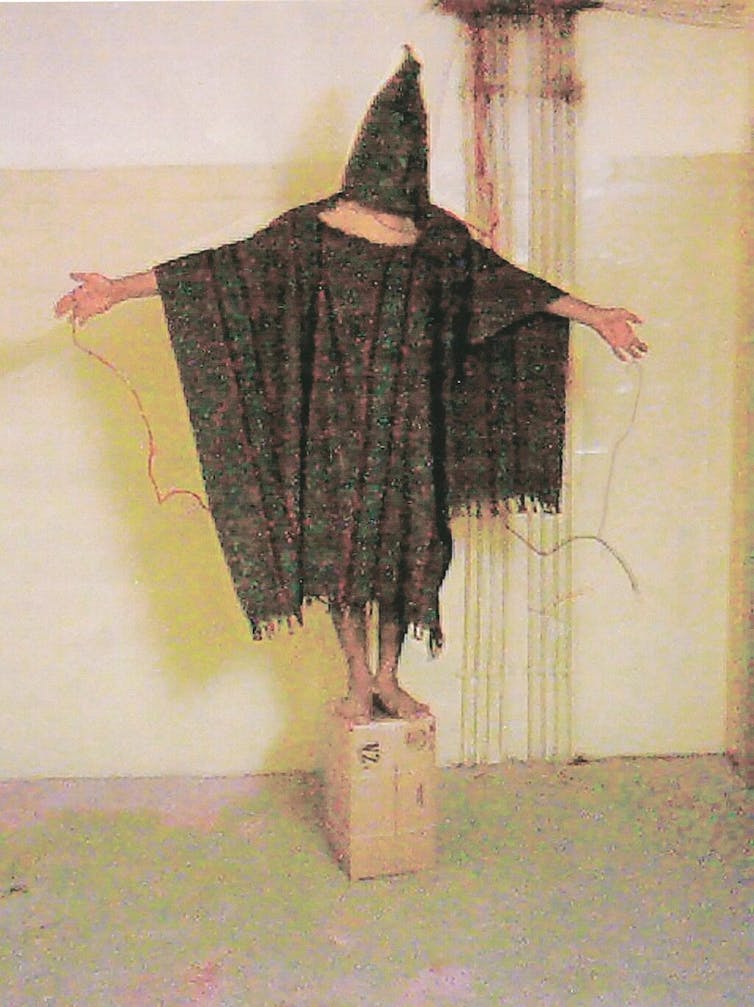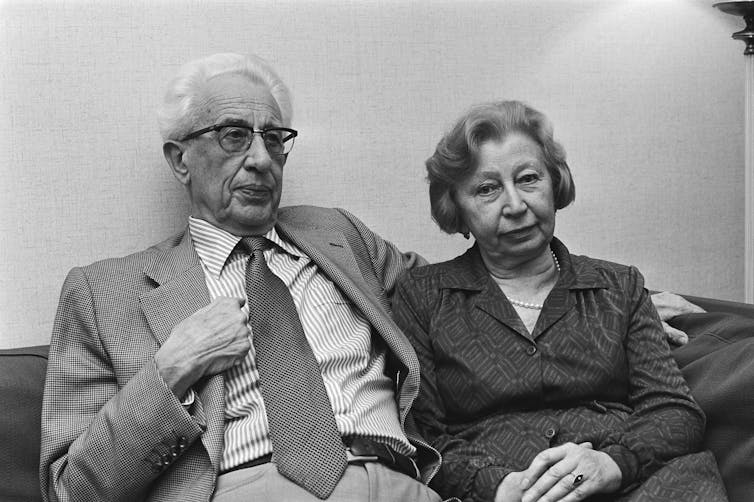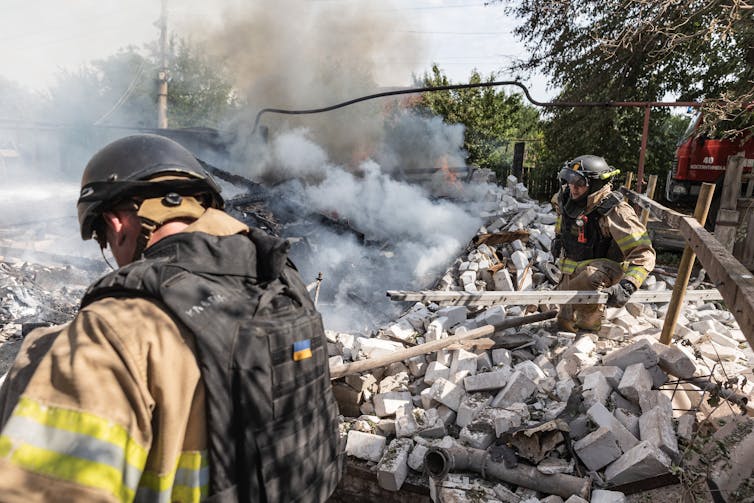Source: The Conversation – Global Perspectives – By Matthew Sussex, Associate Professor (Adj), Griffith Asia Institute; and Fellow, Strategic and Defence Studies Centre, Australian National University
The bizarre summit between Donald Trump and Vladimir Putin in Alaska should sway all but the most credulous doubters that the White House is more interested in friendly relations with Russia’s dictator than achieving a lasting peace in Ukraine.
An abridged program saw the two leaders swiftly conclude the meeting earlier than had been expected. They then heaped praise on one another at a press conference that didn’t feature any questions from the press.
Worryingly, Trump is still as unconcerned about handing Putin symbolic victories as he is unwilling to put any real pressure on the Russian leader.
Symbolic ‘wins’ for Putin
The venue itself was telling. Russia has long carped that Alaska, which it sold to the US in the 1860s, is rightfully still its territory. Prior to the meeting, Kremlin mouthpieces made much of Putin’s team taking a “domestic flight” to Anchorage, recalling billboards that went up in Russia in 2022 proclaiming “Alaska is ours!” That wasn’t helped by yet another Trump gaffe prior to the meeting when he said he would “go back to the United States” if he didn’t like what he heard.
When Putin’s plane landed, US military personnel kneeled to fix a red carpet for the Russian president to walk across – as a respected leader, rather than an indicted war criminal. Putin was then invited to ride along with Trump in his limousine.
Beyond the optics, Trump handed Putin a number of other wins that will shore up his support at home and reinforce to the world that US-Russia relations have been normalised.
A summit is typically offered as a favour – an indication of an earnest desire to improve relations. By inviting him to Alaska, Trump gave Putin a stage to meet the American president as an equal. There was no criticism of Russia’s appalling human rights abuses, its increasingly violent attempts to fragment the transatlantic alliance, or its desire to reshape its fortunes by conquest.
Instead, Trump sought again to portray Putin and himself as victims. He complained that both had been forced to “put up with the ‘Russia, Russia, Russia’ hoax” that Moscow had interfered in the 2016 US presidential election.
He then gifted Putin yet another win, putting the onus for accepting Russian terms to end the war in Ukraine back onto the Ukrainian government and Europe, by observing “it’s ultimately up to them”.
Putin got exactly what he could have hoped for. Aside from the photo ops, he framed any solution to the conflict around the “root causes” – code for NATO being to blame rather than Putin’s unprovoked war of imperial aggression.
He also dodged any prospect of vaguely threatened US sanctions, with Trump returning to his familiar refrain of needing “two weeks” to think about them again.
And then, having pocketed both a symbolic and diplomatic bonanza, Putin promptly skipped lunch and flew home, presumably also accompanied by the bald-headed American eagle ornament that Trump had presented to him.
What does this mean moving forward?
After Trump’s subsequent call with European leaders to brief them on the summit, details about a peace proposal began to leak out.
Putin is reportedly prepared to fix the front lines as they stand in the Kherson and Zaporizhzhia regions of Ukraine, provided Kyiv agrees to cede all of Luhansk and Donetsk, including territory Russia doesn’t currently hold. There would be no immediate ceasefire (which is Europe’s and Ukraine’s preference), but a move towards a permanent peace, which aligns with the Kremlin’s interests.
Make no mistake: this is a thinly disguised trap. It amounts to little more than Putin and Trump slinging a dead cat at Ukraine and Europe, then blaming them as laggards and warmongers when they object.
For one thing, Ukraine still controls a sizeable portion of Donetsk. Giving up Donetsk and Luhansk would not only cede coal and mineral reserves to Moscow, but also require abandoning vital defensive positions that Russian forces have been unable to crack for years.
It would also position Russia to launch potential future incursions, opening the way to Dnipro to the west and Kharkiv to the north.
Trump’s apparent backing for Russia’s demands that Ukraine cede territory for peace – which NATO’s European members reject – means Putin is succeeding in further fracturing the transatlantic partnership.
There was also little mention of who would secure the peace, or how Ukraine can be reassured Putin will not simply use the breathing space to rearm and try again.
Given the Kremlin has opposed NATO membership for Ukraine, would it really agree to European forces securing the new line of control? Or American ones? Would Ukraine be permitted to rearm, and to what extent?
And, even in the event of a firmer US line in a future post-Trump era, Putin will still have achieved a land grab that would be impossible to undo. That, in turn, reinforces the message that conquest pays off.
One apparently brighter note for Ukraine is the hint the US is prepared to offer it a “non-NATO” security guarantee.
But that should also be viewed with caution. The Trump administration has already expressed public ambivalence about US commitments to defend Europe via NATO’s Article 5, which has called its credibility as an ally into question. Would the US really fight for Ukraine if there were a future Russian invasion?
To their credit, European leaders have responded firmly to Trump’s dealings with Putin.
They have welcomed the attempt to resolve the conflict, but told Ukrainian President Volodymyr Zelensky they will continue to back him if the deal is unacceptable. Zelensky, who is due to meet Trump in Washington on Monday, has already rejected the notion of ceding the Donbas region (Donetsk and Luhansk) to Russia.
But Europe will have to face the reality that not only must it do more, but it must also provide sustained leadership on security issues, rather than just reacting to repeated crises.
Trump’s deeper motivations
Ultimately, the Alaska summit shows that peace in Ukraine is only part of the broader picture for the Trump administration, which is dedicated to achieving warmer ties with Moscow, if not outright alignment with it.
In that sense, it matters little to Trump how peace is attained in Ukraine, or how long it lasts. What’s important is he receives credit for it, if not the Nobel Peace Prize he craves.
And while Trump’s vision of splitting Russia away from China is a fantasy, it is nonetheless one he has decided to entertain. That, in turn, compels America’s European partners to respond accordingly.
Already there is plenty of evidence that having failed to win a trade war with China, the Trump administration is now choosing to feast on America’s allies instead. We see this in its fixation with tariffs, its bizarre desire to punish India and Japan, and the trashing of America’s soft power.
Even more sobering, Trump’s diplomatic forays continue to see him treated as sport by authoritarian leaders.
That, in turn, provides a broader lesson for America’s friends and partners: their future security may well rest on America’s good offices, but it is foolish to assume that automatically places their fortunes above the whims of the powerful.
![]()
Matthew Sussex has received funding from the Australian Research Council, the Atlantic Council, the Fulbright Foundation, the Carnegie Foundation, the Lowy Institute and various Australian government departments and agencies.
– ref. Putin got the red-carpet treatment from Trump. Where does this leave Ukraine? – https://theconversation.com/putin-got-the-red-carpet-treatment-from-trump-where-does-this-leave-ukraine-260922













